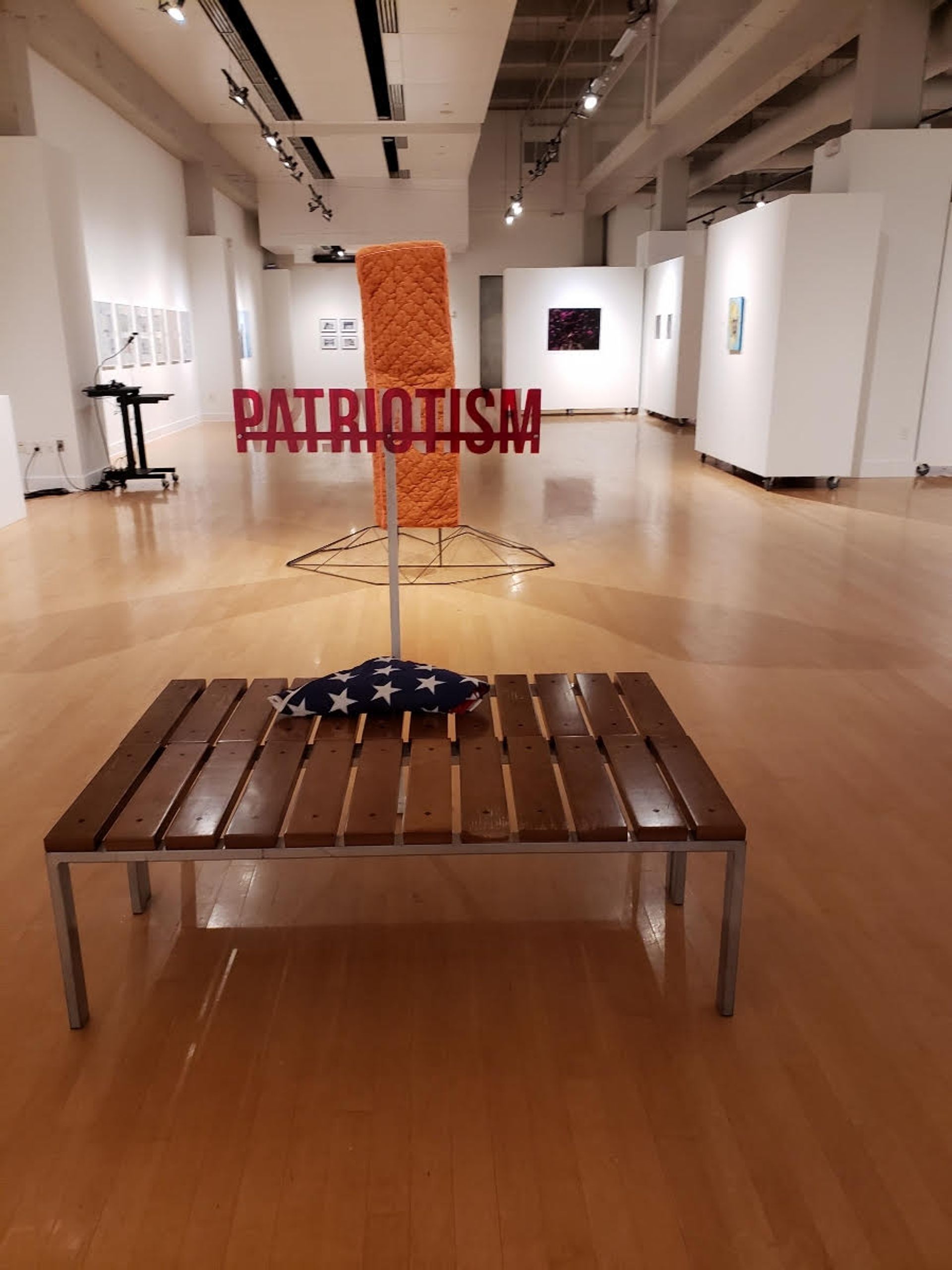An arts professor of the private University of Tampa in Florida says she has been targeted by campus conservatives for a work she produced for an annual faculty exhibition that addresses the rise of white nationalism under former US President Donald Trump’s term in office.
Emma Quintana, who teaches a digital fabrication class at the university, says she created the installation White America: Supremacy, Nationalism and Patriotism (2020)—which conjoins the words “nationalism” and “patriotism” on a pedestal planted atop an American flag—to show how the “collective representation of the US has been debased by white nationalists”, she says. The decision to place the work on an American flag, which as a sign of respect is never meant to touch the ground, is a criticism of the far-right’s appropriation of the symbol for their divisive rhetoric, Quintana adds.
Because there was no official public opening for the exhibition, Quintana “didn’t think anything would come from the piece”, she says. However, photographs denouncing the work began to surface on social media last week, graining some traction via an Instagram account registered to the UTampa College Republicans, in which the group writes: “This is not art. This is the definition of the utter most [sic] disrespect for the greatest country in the world.” The group had not responded to requests for comment at the time of this story's publication.
A group of students, who have not been identified, also entered the gallery days after the show opened, folded the US flag used in the work into a triangle—a military tradition—and placed it on a bench. They also turned the installation around so that visitors would first see the word “patriotism”. The students then allegedly confronted a student gallery attendant, Quintana says, demanding to know “why the university’s art department would support such a derogatory, slanderous artwork”.

Emma Quintana's White America: Supremacy, Nationalism and Patriotism (2020) after it was vandalised and moved to a bench by anonymous individuals Emma Quintana
An anonymous individual also pinned a message to the building with a photograph of Donald Trump that read, in part: “People have lived and died by that flag in the name of freedom and it’s common knowledge that the most disrespectful gesture one can make is too [sic] allow that flag to touch the ground.”
Jocelyn Boigenzahn, the director of the university galleries and lecturer of museum studies, says she has started collecting responses to the piece, which are being displayed in the gallery with the aim of creating a more productive discussion around the work. Around six have been posted so far. “Most of the responses have been negative toward [Quintana's] decision to place the flag on the floor,” Boigenzahn says. “But the goal is to have a discussion about freedom of speech and provide a space for everyone to express their feelings so that we can have a positive, ethical and intellectually driven dialogue.”
She adds: “I do believe that, as people have a chance to read her artist’s statement, they will understand that there is an intent behind the work, and that it’s not just an inflammatory act.”
Organisers have also displayed an official statement alongside the piece that encourages feedback from students and patrons, saying: “In accordance with guidelines provided by the American Association of University Professors that align artistic expression with academic freedom, the university does not censor artistic expression and encourages dialogue that is both educational and productive.”
Quintana, who has worked at the university for two years, says she was not surprised by the response to the piece and defends the work for being “in line with the conversations happening right now and the national climate”. However, she worries that the backlash could threaten her future at the university. “My tenured co-workers have told me that this would be a different situation if I was tenured, but as a staff member I have to renew my contract every year,” she says.


